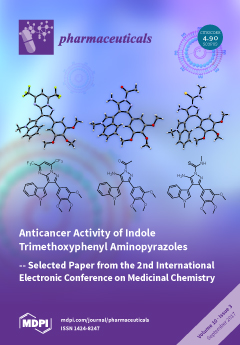Open AccessArticle
Behavioral and Neurochemical Consequences of Pentylenetetrazol-Induced Kindling in Young and Middle-Aged Rats
by
Alexandre Ademar Hoeller, Cristiane Ribeiro De Carvalho, Pedro Leite Costa Franco, Douglas Affonso Formolo, Alexandre Kracker Imthon, Henrique Rodighero Dos Santos, Ingrid Eidt, Gabriel Roman Souza, Leandra Celso Constantino, Camila Leite Ferreira, Rui Daniel Prediger, Rodrigo Bainy Leal and Roger Walz
Cited by 21 | Viewed by 6404
Abstract
(1) Objectives: Epilepsy disorder is likely to increase with aging, leading to an increased incidence of comorbidities and mortality. In spite of that, there is a lack of information regarding this issue and little knowledge of cognitive and emotional responses in aging subjects
[...] Read more.
(1) Objectives: Epilepsy disorder is likely to increase with aging, leading to an increased incidence of comorbidities and mortality. In spite of that, there is a lack of information regarding this issue and little knowledge of cognitive and emotional responses in aging subjects following epileptogenesis. We investigated whether and how aging distress epilepsy-related behavioral and biochemical outcomes are associated with cognition and emotion. (2) Methods: Young and middle-aged Wistar rats (3 or 12 months old) were treated with pentylenetetrazol (PTZ, 35 mg/kg) and injected on alternated days for 20 (young rats) and 32 days (middle-aged rats). Kindling was reached after two consecutive stages 4 plus one stage 5 or 6 in Racine scale. Control and kindled rats were evaluated in the elevated plus-maze (EPM) and object-recognition tests and their hippocampus was collected 24 h later for mitogen-activated protein kinases (MAPK) dosage. (3) Results: Middle-aged rats presented a higher resistance to develop kindling, with a decrease in the seizure severity index observed following the 4th and 9th PTZ injections. Middle-aged rats displayed an increased duration of the first myoclonic seizure and an increased latency to the first generalized seizure when compared to younger rats. The induction of kindling did not impair the animals’ performance (regardless of age) in the object-recognition task and the EPM test as well as it did not alter the hippocampal levels of MAPKs. (4) Significance: Our findings reveal that, despite age-related differences during epileptogenesis, middle-aged rats evaluated after kindling performed similarly during discriminative learning and emotional tasks in comparison to young animals, with no alteration of hippocampal MAPKs. Additional investigation must be carried out to explore the electrophysiological mechanisms underlying these responses, as well as the long-term effects displayed after kindling.
Full article
►▼
Show Figures






